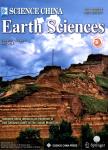Seasonal variation of carbon exchange of typical forest ecosystems along the eastern forest transect in China
Seasonal variation of carbon exchange of typical forest ecosystems along the eastern forest transect in China作者机构:1. Synthesis Center of Chinese Ecosystem Research Network (CERN) Institute of Geographic Sciences and Natural Re-sources Research Chinese Academy of Sciences Beijing 100101 China 5. Graduate University of Chinese Academy of Sciences Beijing 100049 China 2. Institute of Applied Ecology Chinese Academy of Sciences Shenyang 110016 China 3. South China Institute of Botany Chinese Academy of Sciences Guangzhou 510650 China 4. Xishuangbanna Tropical Botanical Garden Chinese Academy of Sciences Kunming 650223 China
出 版 物:《Science China Earth Sciences》 (中国科学(地球科学英文版))
年 卷 期:2006年第49卷第S2期
页 面:47-62页
学科分类:09[农学] 0903[农学-农业资源与环境]
基 金:This study was supported by the Knowledge Innovation Project of the Chinese Academy of Sciences (Grant No. KZCX1-SW-01-01A) the National Key Research and Development Program (Grant No.2002CB412501)
主 题:forest transect carbon budget ecosystem photosynthesis ecosystem respiration China-FLUX eddy covariance.
摘 要:The long-term and continuous carbon fluxes of Changbaishan temperate mixed forest (CBS), Qianyanzhou subtropical evergreen coniferous forest (QYZ), Dinghushan subtropical evergreen mixed forest (DHS) and Xishuangbana tropical rainforest (XSBN) have been measured with eddy covariance techniques. In 2003, different responses of carbon exchange to the environment appeared across the four ecosystems. At CBS, the carbon exchange was mainly determined by radiation and temperature. 0℃and 10℃were two important temperature thresholds; the former determined the length of the growing season and the latter affected the magnitude of carbon exchange. The maximum net ecosystem exchange (NEE) of CBS occurred in early summer because maximum ecosystem photosynthesis (GPP) occurred earlier than maximum ecosystem respiration (Rθ). During summer, QYZ experienced severe drought and NEE decreased significantly mainly as a result of the depression of GPP. At DHS and XSBN, NEE was higher in the drought season than the wet season, especially the conversion between carbon sink and source occurring during the transition season at XSBN. During the wet season, increased fog and humid weather resulted from the plentiful rainfall, the ecosystem GPP was dispressed. The Q10 and annual respiration of XSBN were the highest among the four ecosystems, while the average daily respiration of CBS during the growing season was the highest. Annual NEE of CBS, QYZ, DHS and XSBN were 181.5, 360.9, 536.2 and -320.0 g·C·m-2·a-1, respectively. From CBS to DHS, the temperature and precipitation increased with the decrease in latitude. The ratio of WEE/Rθincreased with latitude, while Rθ/Gpp, ecosystem light use efficiency (LUE), precipitation use efficiency and average daily GPP decreased gradually. However, XSBN usually escaped such latitude trend probably because of the influence of the south-west monsoon climate which does not affect the other ecosystems. Long-term measurement and more research were necessary t



